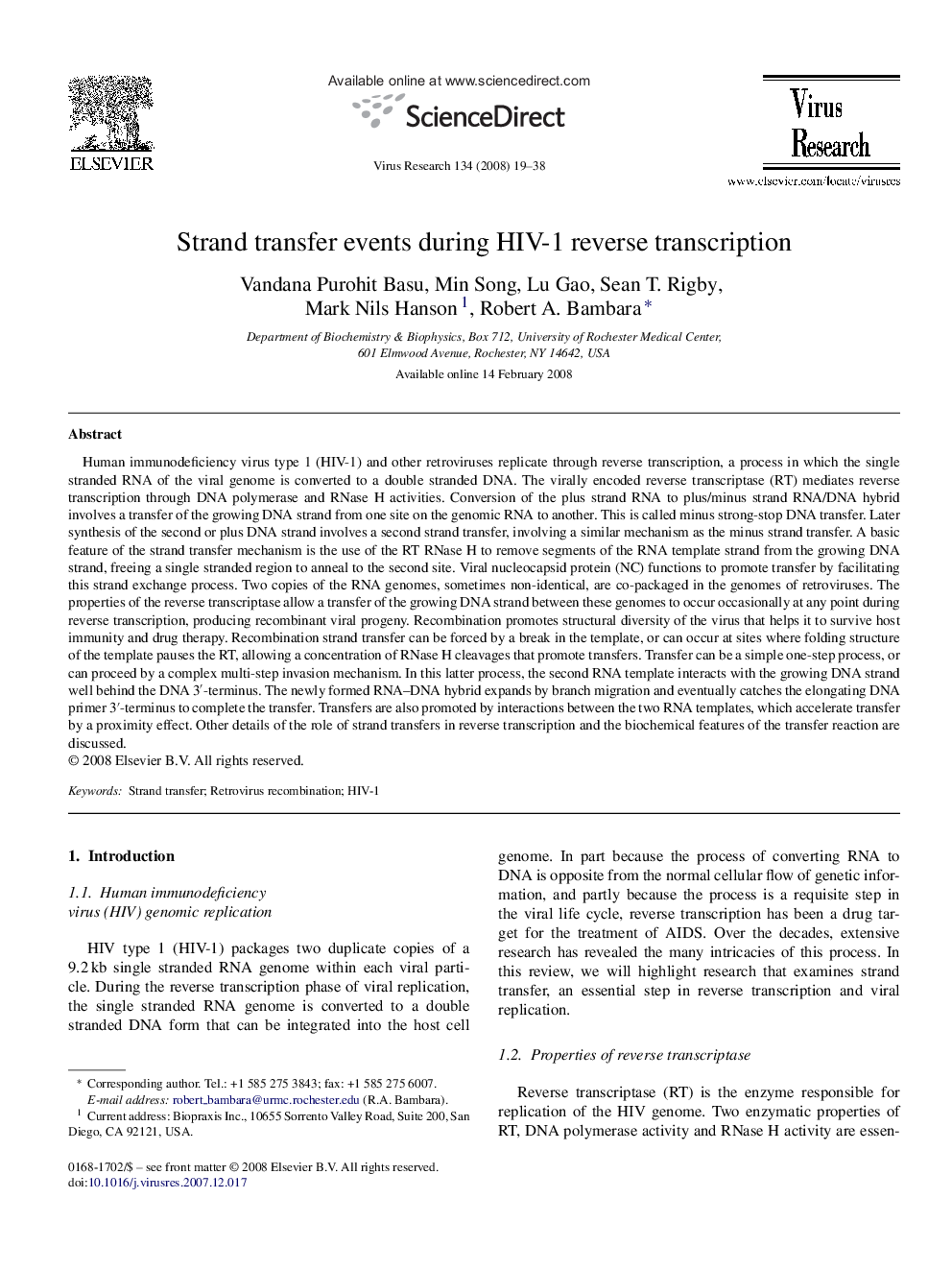| کد مقاله | کد نشریه | سال انتشار | مقاله انگلیسی | نسخه تمام متن |
|---|---|---|---|---|
| 3430285 | 1594400 | 2008 | 20 صفحه PDF | دانلود رایگان |

Human immunodeficiency virus type 1 (HIV-1) and other retroviruses replicate through reverse transcription, a process in which the single stranded RNA of the viral genome is converted to a double stranded DNA. The virally encoded reverse transcriptase (RT) mediates reverse transcription through DNA polymerase and RNase H activities. Conversion of the plus strand RNA to plus/minus strand RNA/DNA hybrid involves a transfer of the growing DNA strand from one site on the genomic RNA to another. This is called minus strong-stop DNA transfer. Later synthesis of the second or plus DNA strand involves a second strand transfer, involving a similar mechanism as the minus strand transfer. A basic feature of the strand transfer mechanism is the use of the RT RNase H to remove segments of the RNA template strand from the growing DNA strand, freeing a single stranded region to anneal to the second site. Viral nucleocapsid protein (NC) functions to promote transfer by facilitating this strand exchange process. Two copies of the RNA genomes, sometimes non-identical, are co-packaged in the genomes of retroviruses. The properties of the reverse transcriptase allow a transfer of the growing DNA strand between these genomes to occur occasionally at any point during reverse transcription, producing recombinant viral progeny. Recombination promotes structural diversity of the virus that helps it to survive host immunity and drug therapy. Recombination strand transfer can be forced by a break in the template, or can occur at sites where folding structure of the template pauses the RT, allowing a concentration of RNase H cleavages that promote transfers. Transfer can be a simple one-step process, or can proceed by a complex multi-step invasion mechanism. In this latter process, the second RNA template interacts with the growing DNA strand well behind the DNA 3′-terminus. The newly formed RNA–DNA hybrid expands by branch migration and eventually catches the elongating DNA primer 3′-terminus to complete the transfer. Transfers are also promoted by interactions between the two RNA templates, which accelerate transfer by a proximity effect. Other details of the role of strand transfers in reverse transcription and the biochemical features of the transfer reaction are discussed.
Journal: Virus Research - Volume 134, Issues 1–2, June 2008, Pages 19–38